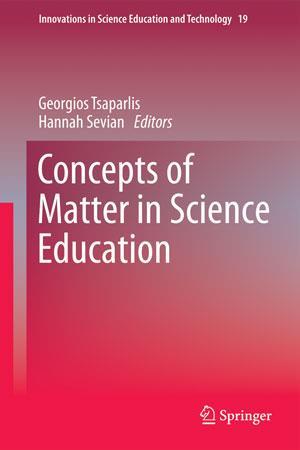Understanding matter
Concepts of matter in science education
Georgios Tsaparlis and Hannah Sevian (eds)
Springer
2013 | 400pp | £117 (HB)
ISBN 9789400759138

This substantial book, organised in six sections, offers 21 chapters emerging from a 2010 symposium held in Athens, Greece, on Particulate and Structural Concepts of Matter. I would normally classify symposium texts as ‘worthy’ but of relatively limited value. However this one resembles finding diamonds in kimberlite rock.
I started at the back of the book, for no other reason than to make sure I included those chapters. Reward was instant. In the Chemical Structure and Bonding section, Keith Taber’s chapter on learners’ conceptions of chemical stability, change and bonding was the equivalent of discovering a Cullinan diamond. He provides an analysis of alternative frameworks held by students, which is simply a ‘must-read’ for anyone teaching chemistry at school or university. I also enjoyed Meijer, Bulte and Pilot’s Macro-Micro Thinking with Structure-Property Relations, which relates contexts with content in skilful and engaging ways.
The final section on the history and philosophy of science offers further gleaming gems, discussing the historical development of atomism and developing a scientifically sound understanding of concepts of matter.
Earlier chapters report international researchers’ empirical studies. Part one focuses on learning progressions, a current trend in science education research. Topics that stand out here include a tried and tested 15 lesson sequence for lower secondary students and a carefully crafted set of engaging activities for developing young children’s thinking.
Part two explores aspects of students’ and teachers’ mental models of the particulate nature of matter. Again, plenty of strategies are available to help students and teachers develop better understanding of the concept of matter and how to teach it, including diagnostic instruments and tests. Part three offers two extremely useful chapters that use technology, and the fourth section presents research on applying the particle model to chemical reactions and phenomena.
As with any composite text, this is not perfect. Writing styles vary and are heavy at times. Tighter editing would have cut material that doesn’t shine with the authority of the rest. But any chemistry teacher digging into this book will find something of value to help them help their students to more clearly ‘see’ and understand the concept of matter.
Purchase Concepts of matter in science education from Amazon.co.uk









No comments yet